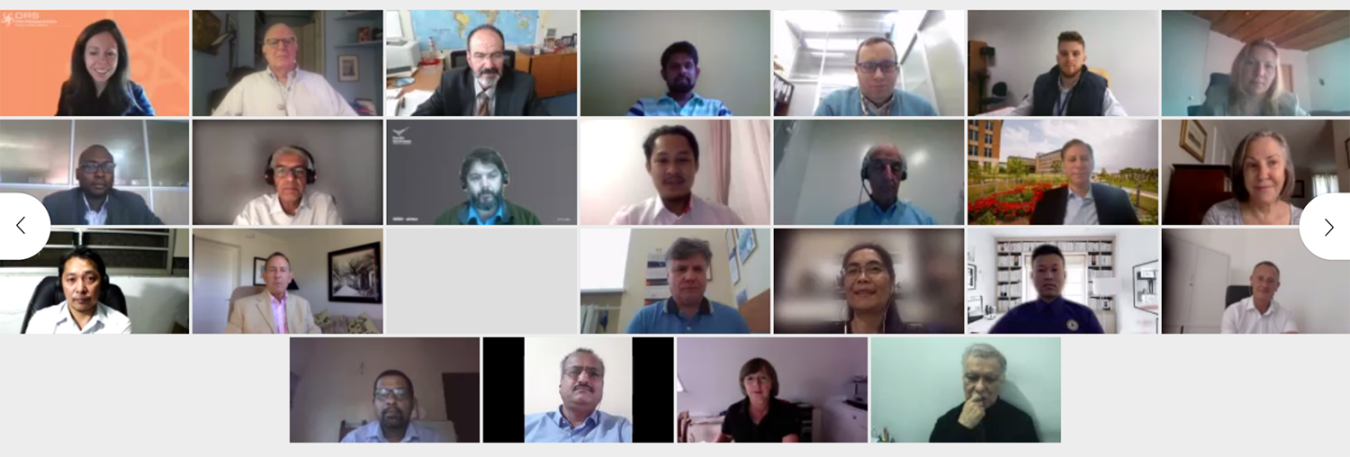NNSA and its counterparts in France and Germany virtually hosted over 200 people from across the world in June to discuss and share about transitioning to alternative technologies that reduce global reliance on high-activity radioactive sources.
National Nuclear Security Administration
July 21, 2021
NNSA’s Office of Radiological Security (ORS) and counterparts in France and Germany virtually hosted over 200 people from across the world in June to discuss and share experiences about transitioning to alternative technologies that reduce global reliance on high-activity radioactive sources.
NNSA supports the adoption of non-radioisotopic alternative technologies to permanently reduce the risk of bad actors acquiring potentially dangerous radioactive materials. These technologies replace high-activity radioisotopes with machine-based radiation or eliminate the need for radiation altogether.
More and more people are recognizing the benefits of adopting these advanced alternative technologies to accomplish their missions in healthcare and industry.
Thanks to alternative technologies, there are effective ways of treating cancer, irradiating blood, and sterilizing insects that alleviate the security and disposition concerns associated with high-activity radioactive sources.
The sixth annual Ad Hoc Meeting of Stakeholder States Involved with Technological Alternatives to High-Risk Radioactive Sources convened June 14-18 and attracted a wide range of participants from government, industry, non-governmental organizations, and international organizations such as the International Atomic Energy Agency (IAEA).
NNSA, France’s Nuclear Safety Authority, and Germany’s Federal Office for Radiation Protection organize the international gathering annually, and the 2021 edition was the first virtual meeting.
Session topics included a look at the alternative technology landscape; national initiatives and policies in support of alternative technologies; leveraging public-private partnerships; addressing gaps in alternative technology applications such as radiotherapy, sterile insect techniques and industrial sterilization; and the growing global momentum for these technologies.
Some examples of alternative technologies that produce radiation include using X-ray devices to irradiate blood, medical linear accelerators to treat cancer, and electron beam-based technology to sterilize agricultural products.
Gerhard Küntzle, Germany’s Ambassador to the Office of the United Nations (UN) and to the other International Organizations in Vienna, provided welcoming remarks on the first day of the meeting.
“It is important to add that the Ad Hoc Working Group in no way seeks to impose restrictions or hurdles for the peaceful use of nuclear technologies – an apprehension that can often be heard here in Vienna,” said Ambassador Küntzle. “The group rather wishes to create awareness for alternative routes to achieving the same objectives. Routes that avoid the security risks associated with high activity radioactive sources, but that may also offer technical and economic advantages, not the least since they require less costly security measures. This makes such alternatives attractive, also for developing countries.”
Dr. Najat Mokhtar, the IAEA’s Deputy Director General for the Department of Nuclear Sciences and Applications, noted during her keynote address that every radiation technology comes with its challenges, but there is a need to continuously improve efficiency, safety, and security, as these technologies provide immense value to people. The IAEA’s support for radiation technologies in human health, food and agriculture, waste management, and other areas is directly linked to nine of the 17 UN Sustainable Development Goals.
Some examples of alternative technologies that produce radiation include using X-ray devices to irradiate blood, medical linear accelerators to treat cancer, and electron beam-based technology to sterilize agricultural products.
The U.S. National Academies of Sciences, Engineering, and Medicine (NAS) provided participants with an overview of the alternative technology landscape. The presentation was based on their new consensus report, published June 16, titled Radioactive Sources: Applications and Alternative Technologies.
“This level of participation [at the meeting] signals that alternative technologies for radioactive sources like cobalt-60 and cesium-137 are continuing to gain traction among the international community,” said Kristina Hatcher, Director of the ORS International Program. “More and more people are recognizing the benefits of adopting these advanced alternative technologies to accomplish their missions in healthcare and industry.”

